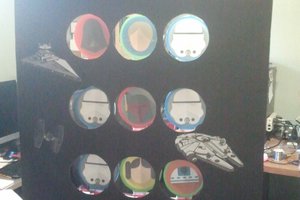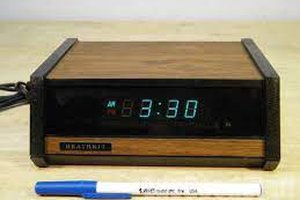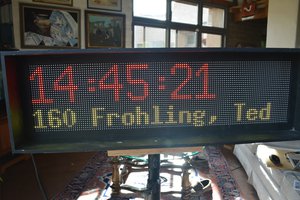Knowing that different Lissajous figures can be created by varying the input frequency with respect to a reference frequency. Its only a small step to realizing these figures in terms of numbers if we represent the number by the number of lobes in a Lissajous figure. By lobes this being the area bounded by the two peaks vertically aligned either side of the X-axis.
The numbers to be represented will be decimal values from 0 to 9.
From there we can create all the numbers required to indicate the time in 24H format
The numeric layout is somewhat dictated by components being used on this project.
This being the resolution and physical size of the display. (320 x 240 at 2 inches).
The screen is organised as 4 equal sized quadrants.
The top row represents the hours reading from left to right, tens then units.
The bottom row represents the minutes reading from left to right, tens then units.
The physical layout is arranged in the following manner.
1: Display Area
Shows the time as Lissajous figures.
Seconds are indicated by a line that increases in length from left to right horizontally.
The buttons on the display PCB are programmed to function enabling time setting only if the Mode switch is set, negating accidental setting.
A - Hours, X - Minutes and B - Set
However, due to the small size of the buttons, larger easier controls were fitted.
Additionally, the display is fitted behind a clear Acrylic screen for protection making the buttons inaccessible.
2: Sounder
Indicates hour intervals.
3; Controls
A simple mode selection switch which will enable or disable time adjustment.
A rotary encoder with colour mode indication, blue - adjust mode selected, green - time set.
Time is adjusted by rotating the knob forward or backwards changing minutes and hours through the 24 cycle.
A simple momentary push button that will program the time set when pressed.
Everything is mounted to the front panel to keep it compact.


 TheCatwoman
TheCatwoman

 ted
ted
Thanks, glad you like it.